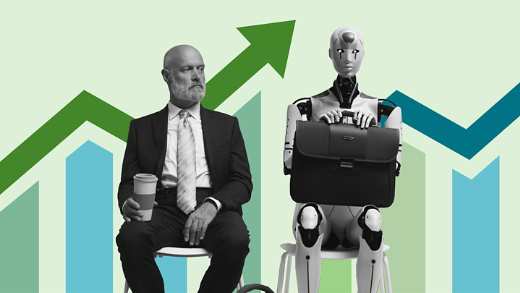- What is a bond?
- How are bonds priced?
- What are the different types of bonds?
- Why invest in bonds?
- What’s happening in the bond markets right now?
Introduction
Bonds are the building blocks of financial markets, used to finance everything from wars to infrastructure to corporate research and development. The size of the global bond market can be difficult to comprehend. At the beginning of 2022, the amount of bonds outstanding worldwide was over $126 trillion, or £103 trillion (see Figure 1).
To understand this vast world, it helps to break it down into its component parts.
In this article, we’ll explain the key points investors need to know about bonds, from the simple mechanics of pricing and yield to trickier concepts such as duration. We’ll also look at the pros and cons of bonds as investments and why now might be a good time to add them to portfolios.
Figure 1: Total value of global bonds outstanding ($ billions)
Source: Bank for International Settlements, 2022.
What is a bond?
A bond is effectively an I.O.U. which an investor, or bondholder, buys from a borrower, or issuer, such as a government (in the case of a sovereign bond) or company (a corporate bond).
In this transaction, the bondholder is lending money to the issuer in exchange for a series of regular interest payments, known as the “coupon”, until the bond becomes due (or “matures”) and the principal is repaid.
Consider the example in Figure 2. Company A wants to raise £10 million to spend on new equipment. It may issue 10,000 five-year bonds for £1,000 each, at an annual coupon of five per cent. This means the company will pay £50 to each investor every 12 months until year five, when the bonds mature and the investors receive back their £1,000 (the “par” value of the bond).
Figure 2: Life of a bond, from issuance to coupon payments to maturity

Source: Aviva Investors, September 2023.
The coupon rate, agreed in advance, usually remains constant through the life of the bond, which is why bonds are sometimes referred to as “fixed-income” investments. The size of the coupon, usually paid annually or semi-annually, is influenced at the time of issue by several factors. These include current interest rates, the length of time before the bond matures, demand and the perceived risk of “default”, which is when the issuer is unable to pay either the interest or the principal.
Bonds with a longer maturity will usually have higher coupons, compensating the holder for the increased risk, as the longer timeframe means there is more uncertainty about interest rates (which can affect the bond’s market value) and other factors relating to the issuer’s ability to make its payments.
A bond is effectively an I.O.U. which an investor, or bondholder, buys from a borrower, or issuer
Bond issuers are usually given credit ratings by independent agencies, which investors use to get a sense of the risk involved. Issuers with the highest “triple-A” ratings are extremely unlikely to default, so the coupon on their bonds is low. US government bonds, known as Treasuries, are considered effectively zero-risk, as there is thought to be almost no chance the US government will be unable to pay its debts.
At the other end of the spectrum, bonds from issuers rated below a certain threshold are known as “high-yield” or “junk”. Coupons on these bonds tend to be higher.
How are bonds priced in the market?
Although investors will sometimes hold bonds to maturity, they can also sell them on in the secondary market. The buyer will then collect the coupon payments from the issuer and (if holding the bond to maturity) the principal when due.
Bonds can be sold for either more than their face value (at a premium) or less than face value (at a discount). Given the coupon payment stays the same, the price paid for the bond will affect the buyer’s overall return. The return is measured using a figure known as “yield”.
A simple way to calculate a bond’s current yield is to divide the coupon payments by the purchase price. This means yields and bond prices have an inverse relationship: i.e., when prices rise, yields fall, and vice versa.
Think back to Company A’s £1,000 bonds, with their five per cent coupon. Imagine that a bondholder sells one of these bonds to another investor at a premium, say £1,150. For the buyer, the coupon of £50 on the bond represents a yield of 4.35 per cent (or 50 divided by 1,150). Because the bond has risen in price, the yield has gone down.
A simple way to calculate a bond’s current yield is to divide the coupon payments by the purchase price
Many factors affect bond prices and yields in the secondary market, including the general state of the economy. Figure 3 shows how the credit spread (or difference in yield) between US Treasuries and investment-grade (or higher-rated) corporate bonds has changed over time. It shows yields on corporate bonds rise sharply during times of market stress, such as during the global financial crisis of 2008-’09 and the early stages of the COVID-19 pandemic.
Note the yield on US Treasuries is typically much more stable because bondholders are confident the US government will repay regardless of the economic context. In fact, jittery investors often move their money into Treasuries and other highly rated government bonds during times of turmoil, which is why they are sometimes referred to as “safe havens”.
Figure 3: US investment-grade credit spread 2003-2023
Source: Aviva Investors, Bloomberg. Data as of May 31, 2023.
Other factors affecting bond prices include overall levels of supply and demand, changes in the creditworthiness of the issuer and inflation. Because rising inflation erodes the value of future interest and principal payments, it tends to result in bonds losing value. (A subcategory of bond, known as inflation-linked bonds, offer some protection by connecting the level of interest and principal payments to the inflation rate.)
When interest rates go up, bond prices fall, and yields rise
Related to inflation is the most important driver of bond prices: base rates, the interest rates set by central banks. When interest rates go up, bond prices fall, and yields rise (see Figure 4). This is partly because the coupon payments on newer bonds are likely to be higher than those already on the market, and therefore more enticing to investors than those they hold. (The opposite happens when base rates go down: yields fall, and prices rise.)
Let’s return to Company A. Imagine the firm sells a new batch of bonds six months after the first issuance. The central bank has raised base rates by 100 basis points (or one percentage point) in the interim. All else being equal, the new bonds will require a higher coupon to attract investors, meaning the company’s previous bonds will be less valuable. If the central bank had cut rates, the opposite would happen, and Company A’s existing bonds would increase in value.
Figure 4: Interest rates, bond prices and yield

Source: Aviva Investors, September 2023.
To assess a bond’s sensitivity to interest rates, investors use a measurement known as “duration”. Duration tells you the extent to which a bond’s value will rise or fall in response to changes in interest rates. When rates fluctuate, the price of a bond with a long duration is likely to move more sharply than one with a short duration. This means longer-duration bonds come with higher interest-rate risk.
Expressed in years, duration is a complex calculation that considers the time left until the bond matures and the value of the bond’s coupon. The longer the time to maturity, the higher the duration. Imagine you lent a friend £100: you won’t be concerned about interest rates if they were paying you back in a few days. But if you had lent the money for 20 years, you absolutely would.
To assess a bond’s sensitivity to interest rates, investors use a measurement known as “duration”
The bond’s coupon value also impacts its sensitivity to rates: the higher the coupon, the lower the duration. If you have to wait until maturity to get any of your investment back, the bond will be much more sensitive to interest rates than if you get your return back sooner.
In simple terms, duration can be used to gauge the change in a bond’s value in response to a one per cent change in interest rates. If interest rates rise by one per cent, the price of a bond with a duration of three years will fall by three per cent; if interest rates fall by one per cent, the same bond’s price will rise by three per cent (see Figure 5).
Duration can inform investment strategies and it is particularly important to monitor the duration of a bond portfolio when interest rates are rising or falling. For example, if interest rates are rising, the value of a portfolio made up of shorter-duration bonds is likely to be less affected than one with a longer average duration. When rates are falling, the opposite will be true: portfolios containing bonds with a longer duration are likely to rise in value faster than those with a shorter duration.
Figure 5: Duration and bond pricing

Source: Aviva Investors, September 2023.
What are the different types of bonds?
The markets contain a dizzying variety of bonds. Here are some of the most important categories:
Asset-backed securities (ABS)
This is when many loans or other assets are packaged up into a single bond that can be sold on to big investors. Securitisations of US “subprime” mortgages – so called because the loans were of lower quality – into products known as mortgage-backed securities (MBS) played a role in the global financial crisis of 2008-’09 when it became clear rating agencies and investors had misjudged the risk.
Callable bonds
Here, the issuer retains the right to “call” or redeem the bond earlier than its maturity date by repaying the principal. These bonds typically offer a higher rate of interest than traditional bonds.
Convertible bonds
These pay interest, like conventional bonds, but can be converted into an equity stake in a corporate issuer under certain conditions.
Corporate bonds
Issued by companies looking for investment, corporate bonds span debt from large multinational conglomerates to smaller, riskier companies that may have lower credit ratings and therefore pay higher interest rates on their debt.
Emerging-market bonds
Government or corporate bonds from developing economies. On average, the coupons on these bonds are higher than for “developed-market” equivalents, as they are perceived to be riskier. However, emerging markets encompass a vast range of countries, from small and highly indebted nations to global powerhouses such as Brazil and India. Emerging-market bonds are often categorised as either “hard currency” – meaning they are denominated in US dollars or euros – or “local currency” (the issuer’s own currency), which also expose the bondholder to exchange rate risk.
Government bonds
Often known as sovereign bonds, these are issued by governments, either for investment – for instance in infrastructure – or to service their day-to-day spending.
Inflation-linked bonds
As the name suggests, the coupon and principal on these bonds rises and falls in line with inflation, offering some protection to investors in a time of rising prices.
Sustainable or thematic bonds
Increasingly popular, these bonds can be issued by governments or companies and raise money for environmental or social projects.
Why invest in bonds?
Because they offer a reliable income stream, bonds can be preferable to shares for some investors, such as those looking to offset regular liabilities. Although shares can offer income via company dividends, these payments are dependent on the company’s financial performance and are not as predictable.
Bond prices tend to be less volatile – or less likely to experience material changes – than share prices. Unlike shareholders, bond investors can expect to have their capital repaid on a given date and also rank higher in the capital structure (meaning that if a company goes bankrupt, they are ahead in the queue when it comes to repayment). Bonds can therefore be useful for investors whose priority is to preserve their capital.
Bond prices tend to be less volatile than share prices and can also offer capital appreciation
Bonds can also offer capital appreciation. Investors can realise a profit on a bond if they can sell it at a premium to its face value. The capital appreciation, plus any income derived from the bond, adds up to what is known as the “total return”.
On the other hand, corporate bond investors have less control over their investments than shareholders, because they don’t gain an ownership stake in the issuing company. The higher risk an equity holder takes also offers them higher potential returns relative to bonds.
Because of their different characteristics, bonds and equities can complement each other in an investment portfolio. Bonds and equities usually have a low “correlation”: this means market events that are good for equities tend to be bad for bonds, and vice versa. As a result, investing across both asset classes can help with “diversification”, or spreading risk.
This is the logic behind the traditional 60/40 portfolio mix, which is based on a 60 per cent allocation to equities and 40 per cent to bonds. However, correlations can sometimes rise under some economic conditions – when this happens, 60/40 portfolios are less effective at mitigating risk.
What’s happening in the bond markets currently?
Markets were hit badly last year as the war in Ukraine sent shockwaves across the world’s economies. Russia’s invasion of its neighbour in February 2022 prompted a spike in energy prices, alongside other supply-side bottlenecks, which pushed up global inflation. Central banks raised interest rates to try to tackle the problem, which led to a fall in bond prices and rise in yields.
The tough market environment of 2022 saw the correlation between bonds and equities rise
Another consequence of the tough market environment of 2022 is that the correlation between bonds and equities rose, an unusual situation in which both assets lost value at about the same rate at the same time. This created difficulties for investors relying on a mixture of the two assets to spread risk.
Figure 6 shows “drawdowns” – i.e., the drop in value from the highest to lowest point over a rolling period – for 60/40 portfolios and equity portfolios since 1990. It shows that a 60/40 portfolio is usually more resilient during a crisis. But in 2022 both types of portfolios fell sharply at the same time.
Figure 6: Drawdowns in equities portfolios and 60/40 portfolios, 1990-2022 (per cent)
Source: Aviva Investors, Macrobond, December 1, 2022.
So where do we go from here?
The bond market might offer a clue to the future direction of travel through a measurement known as the “yield curve”. This shows the difference in yield for bonds of different maturities.
Usually, the yield curve looks like the chart on the left in Figure 7: longer-dated maturities offer higher yields. However, the yield curve is occasionally “inverted”, as in the chart on the right. This shows that shorter-dated debt yields more, indicating investors expect longer-term interest rates to fall, as would be the anticipated policy response during a recession. An inverted yield curve has preceded many recessions through history. As of August 2023, the yield curve on US Treasury bonds was inverted.
Figure 7: Normal yield curve and inverted yield curve

Source: Aviva Investors, September 2023.
No-one can predict the future. But if the yield curve is correctly signalling a US recession, bonds would probably perform better than equities in such a scenario, as a cut in interest rates would support bond prices, and shares tend to fall during economic downturns. If this happened, bonds would offer helpful diversification in portfolios. Figure 8 shows that global bond markets tend to rise when the Federal Reserve (the US central bank) cuts interest rates.
If the yield curve is correctly signalling a US recession, bonds would probably perform better than equities
An alternative scenario is that major central banks keep rates high as they try to bring down inflation to their targets, but without causing their economies to fall into recession. This would probably mean bond yields stay higher than they have been over the last decade or so.
While higher rates result in lower bond prices, they can also bring benefits to investors. When interest rates were close to zero, which has been the case for much of the period following global financial crisis, bonds were expensive, and the income they provided was low as a proportion of their cost. But when rates and yields are higher, investors in maturing bonds can reinvest the proceeds in new bonds that offer relatively more attractive levels of income.
Figure 8: Global bond performance versus interest-rate changes (per cent)
Source: Aviva Investors, Morningstar. Data as of February 4, 2023.

















